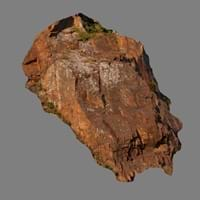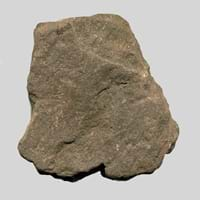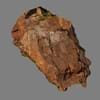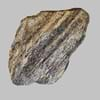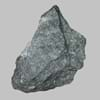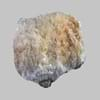Definition
Granulite is fine to medium grained metamorphic rock with a granular of polygonal crystals.
Shale is a fine-grained sedimentary rock which is formed by the compaction of silt and clay-size mineral particles
Origin
Central Europe
Unknown
Discoverer
Unknown
Unknown
Etymology
From Latin granulum, a little grain or fine grained
From German Schalstein laminated limestone, and Schalgebirge layer of stone in stratified rock. From Old English scealu in its base sense of- thing that divides or separate,
Class
Metamorphic Rocks
Sedimentary Rocks
Sub-Class
Durable Rock, Hard Rock
Durable Rock, Medium Hardness Rock
Group
Not Applicable
Not Applicable
Other Categories
Coarse Grained Rock, Medium Grained Rock, Opaque Rock
Fine Grained Rock, Opaque Rock
Texture
Granoblastic
Clastic, Splintery
Color
Black, Brown
Black, Brown, Buff, Green, Grey, Red, Yellow
Durability
Durable
Durable
Appearance
Veined or Pebbled
Muddy
Interior Uses
Bathrooms, Countertops, Decorative Aggregates, Entryways, Flooring, Homes, Hotels, Interior Decoration, Kitchens, Stair Treads
Decorative Aggregates, Homes, Interior Decoration
Exterior Uses
As Building Stone, As Facing Stone, Garden Decoration, Office Buildings, Paving Stone
As Building Stone, As Facing Stone, Office Buildings
Other Architectural Uses
Curbing
Curbing
Construction Industry
As Dimension Stone, Building houses or walls
Cement Manufacture, Construction Aggregate, for Road Aggregate, Making natural cement, Raw material for the manufacture of mortar
Medical Industry
Not Yet Used
Not Yet Used
Antiquity Uses
Artifacts, Monuments, Sculpture
Artifacts, Sculpture
Commercial Uses
Curling, Gemstone, Laboratory bench tops, Soil Conditioner, Tombstones
Creating Artwork, Pottery
Types
Not Available
Red Shale, Black Shale, Green Shale, Grey Shale and Yellow Shale
Features
Clasts are smooth to touch
Easily splits into thin plates, Generally rough to touch, Very fine grained rock
Archaeological Significance
Famous Monuments
Data Not Available
Jantar Mantar in India
Famous Sculptures
Data Not Available
Data Not Available
Pictographs
Not Used
Used
Petroglyphs
Not Used
Used
Formation
Granulite is a fine-grained granular metamorphic rock in which the main component minerals are feldspars and quartz and forms at high temperature and pressure conditions.
Shale forms when very fine-grained clay particles are deposited in water which settle at the bottom of water bodies. They are later compacted hence forming shale.
Mineral Content
Amphibole, Biotite, Feldspar, Hornblade, Micas, Muscovite or Illite, Plagioclase, Quartz
Albite, Biotite, Calcite, Chert, Chlorite, Dolomite, Hematite, Micas, Muscovite or Illite, Pyrite, Quartz, Silica, Sulfides
Compound Content
Aluminium Oxide, CaO, Carbon Dioxide, Iron(III) Oxide, FeO, Potassium Oxide, MgO, MnO, Sodium Oxide, Phosphorus Pentoxide, Sulfur Dioxide, Titanium Dioxide
Ca, Fe, Mg, Silicon Dioxide, Sodium
Types of Metamorphism
Not Applicable
Not Applicable
Types of Weathering
Biological Weathering, Chemical Weathering
Biological Weathering, Chemical Weathering, Mechanical Weathering
Types of Erosion
Chemical Erosion, Water Erosion, Wind Erosion
Chemical Erosion, Coastal Erosion, Glacier Erosion
Grain Size
Medium to Coarse Grained
Very fine-grained
Fracture
Not Available
Not Available
Porosity
Very Less Porous
Highly Porous
Toughness
Not Available
2.6
Specific Gravity
2.8-3.0
2.2-2.8
Transparency
Opaque
Opaque
Density
3.06-3.33 g/cm3
2.4-2.8 g/cm3
Resistance
Heat Resistant, Wear Resistant
Heat Resistant, Impact Resistant
Deposits in Eastern Continents
Asia
China, India, Iran, Saudi Arabia, Sri Lanka, Taiwan, Thailand, Turkey, Vietnam
Bangladesh, China, India, Russia
Africa
Angola, Egypt, Madagascar, Nigeria, South Africa
Ethiopia, Kenya, Morocco, South Africa, Tanzania
Europe
Austria, Belgium, Finland, France, Germany, Italy, Norway, Sardinia, Spain, Switzerland, The Czech Republic, Venezuela
Austria, France, Germany, Greece, Italy, Romania, Scotland, Spain, Switzerland
Others
Not Yet Found
Not Yet Found
Deposits in Western Continents
North America
Canada, USA
USA
South America
Not Yet Found
Bolivia, Chile, Colombia, Ecuador, Peru, Venezuela
Deposits in Oceania Continent
Australia
Not Yet Found
New South Wales, New Zealand, Queensland, Victoria, Western Australia
Granulite vs Shale Characteristics
Though some rocks look identical, they have certain characteristics which distinguish them from others. Characteristics of rocks include texture, appearance, color, fracture, streak, hardness etc. Granulite vs Shale characteristics assist us to distinguish and recognize rocks. Also you can check about Properties of Granulite and Properties of Shale. Learn more about Granulite vs Shale in the next section. The interior uses of Granulite include Bathrooms, Countertops, Decorative aggregates, Entryways, Flooring, Homes, Hotels, Interior decoration, Kitchens and Stair treads whereas the interior uses of Shale include Decorative aggregates, Homes and Interior decoration. Due to some exceptional properties of Granulite and Shale, they have various applications in construction industry. The uses of Granulite in construction industry include As dimension stone, Building houses or walls and that of Shale include Cement manufacture, Construction aggregate, For road aggregate, Making natural cement, Raw material for the manufacture of mortar.
More about Granulite and Shale
Here you can know more about Granulite and Shale. The life cycle of a rock consists of formation of rock, composition of rock and transformation of rock. The composition of Granulite and Shale consists of mineral content and compound content. The mineral content of Granulite includes Amphibole, Biotite, Feldspar, Hornblade, Micas, Muscovite or Illite, Plagioclase, Quartz and mineral content of Shale includes Albite, Biotite, Calcite, Chert, Chlorite, Dolomite, Hematite, Micas, Muscovite or Illite, Pyrite, Quartz, Silica, Sulfides. You can also check out the list of all Metamorphic Rocks. When we have to compare Granulite vs Shale, the texture, color and appearance plays an important role in determining the type of rock. Granulite is available in black, brown colors whereas, Shale is available in black, brown, buff, green, grey, red, yellow colors. Appearance of Granulite is Veined or Pebbled and that of Shale is Muddy. Properties of rock is another aspect for Granulite vs Shale. The hardness of Granulite is 6-7 and that of Shale is 3. The types of Granulite are Not Available whereas types of Shale are Red Shale, Black Shale, Green Shale, Grey Shale and Yellow Shale. Streak of rock is the color of powder produced when it is dragged across an unweathered surface. The streak of Granulite and Shale is white. The specific heat capacity of Granulite is 0.14 kJ/Kg K and that of Shale is 0.39 kJ/Kg K. Depending on the properties like hardness, toughness, specific heat capacity, porosity etc., rocks are resistant to heat, wear, impact, etc.Granulite is heat resistant, wear resistant whereas Shale is heat resistant, impact resistant.
